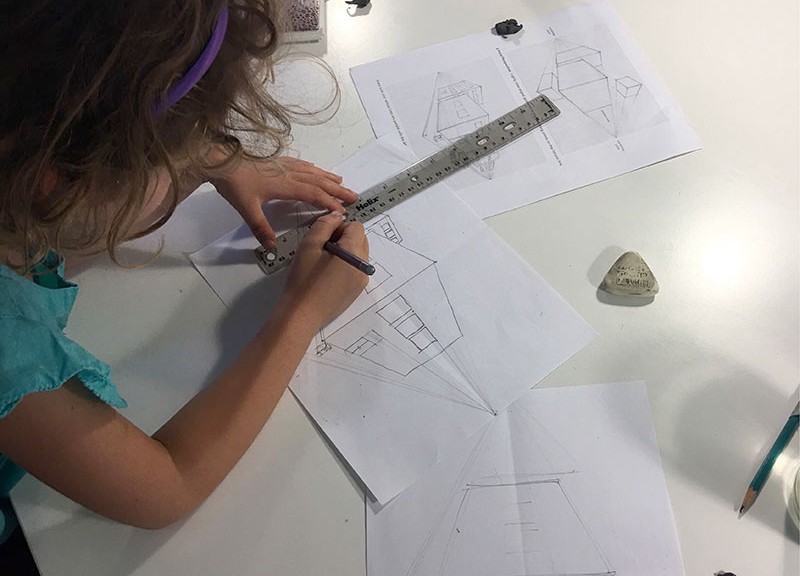Showing off our finished drawings to family and friends can be gratifying. Enthusiastic viewers appreciate your techniques and may even understand that you spend many hours practicing to improve your skills. But hidden to their eyes is your dedication to doing studies—a most misunderstood aspect of learning to draw from observation.
In the tradition of the Renaissance artists, Naomi (shown above) learns the importance of studying as she practices using the system of perspective drawing.
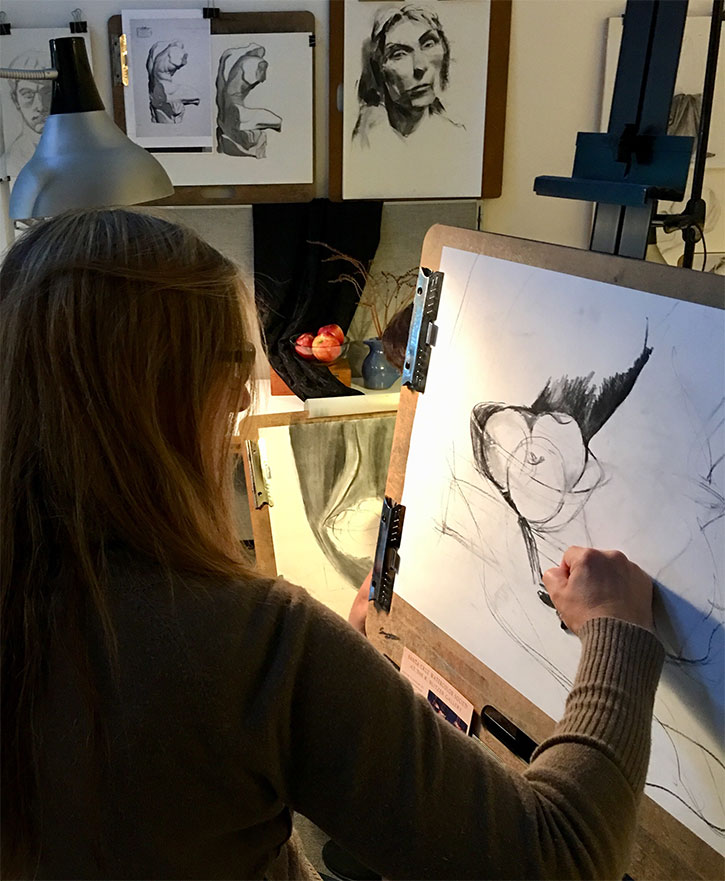
Early Egyptian, Greek, and Italian Renaissance artists and artisans used drawing to study their subjects. They made countless study sketches to solve problems, prepare artwork, and map out elaborate architecture.
By doing study sketches, students at the Scribbles Institute learn to block in dominant shapes of their subject, sketch accurate contours, and confidently work their way toward drawing final compositions.
But as we learn the art of studying, there can also be a lot of “unlearning” during the process.
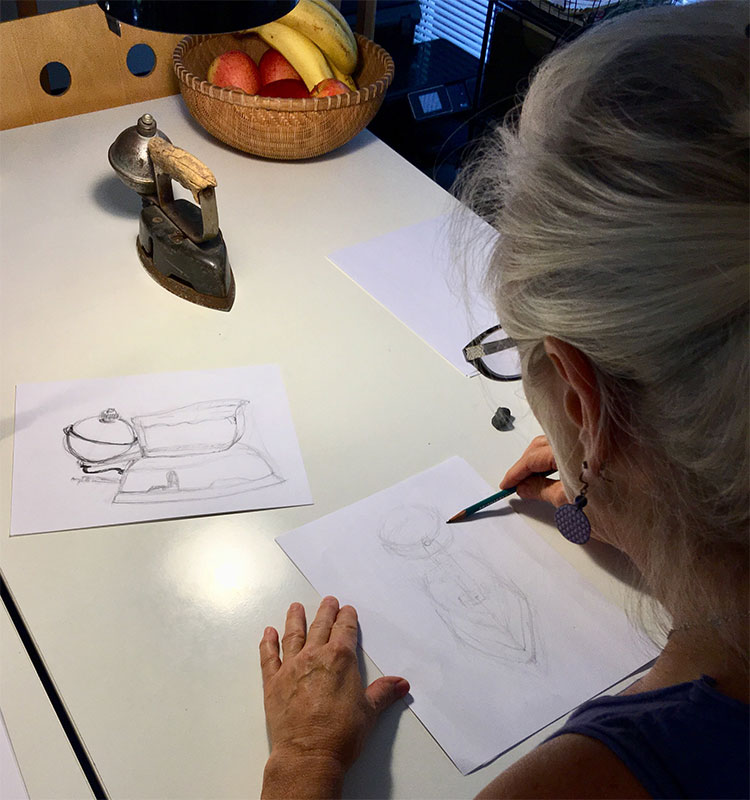
During childhood, most of us are conditioned to think pictures need to be drawn perfectly—first time, every time—without error. The notion of perfectionism can actually work against you in your pursuit of successful drawing. But if you get into the habit of doing study sketches, you’ll discover that making mistakes and correcting them is the foundation of drawing accurately from observation.
If you have ever had to correct crucial measurements of proportions in the final stages of a drawing, then you know the outcome can be disastrous. Study sketches help you correct mistakes early on, before getting too far along with your drawing. It is in the countless study sketches where you will find accuracy, solutions, and creative ideas as you practice.
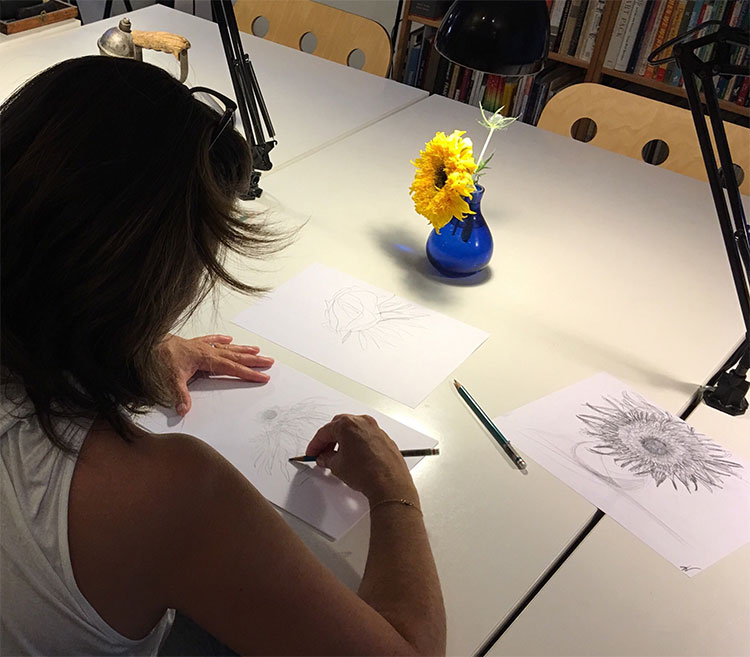
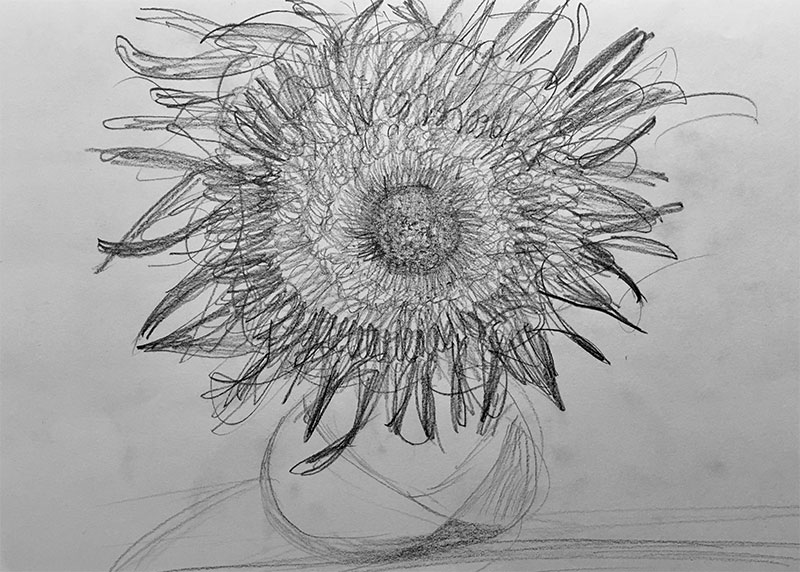
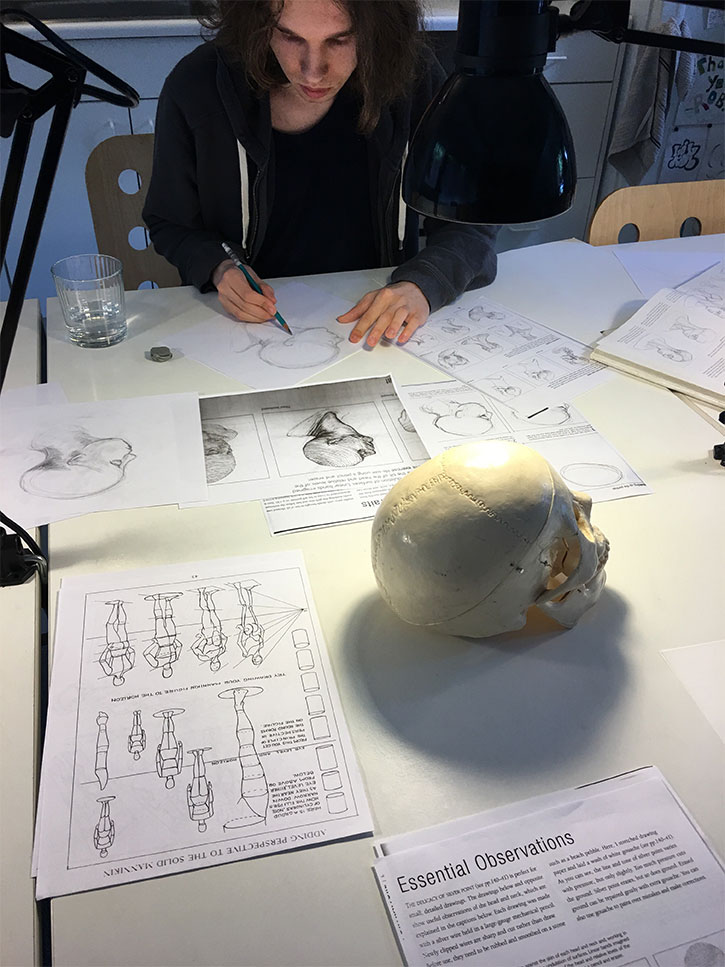
Studies help you grasp complex principles and methods for drawing accurate proportions of the human head and figure. The habit of doing study sketches keeps you from trying to finish your drawing before you even start it. Study sketches show your thinking process on the paper and become a form of note-taking, allowing your brain to process large amounts of information about the subject you are observing.
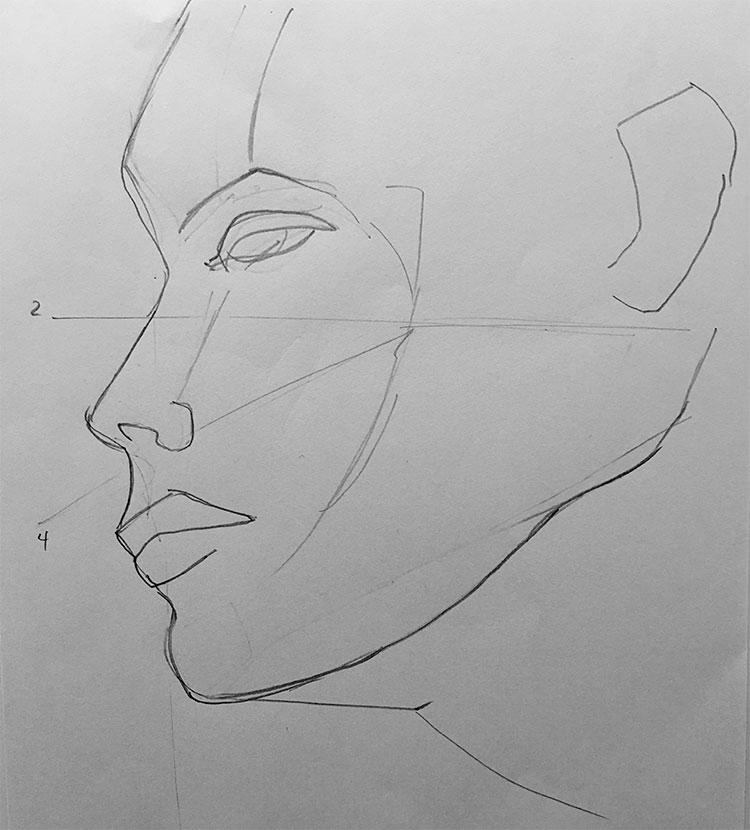
Relax in knowing that an exact replication of your subject is impossible. Lowering your expectations for your drawing to be perfect can raise the level of enjoyment during the process of studying your subject. As you refine the accuracy of your study sketches and work toward a final drawing, a clear and honest depiction of your subject begins to emerge.
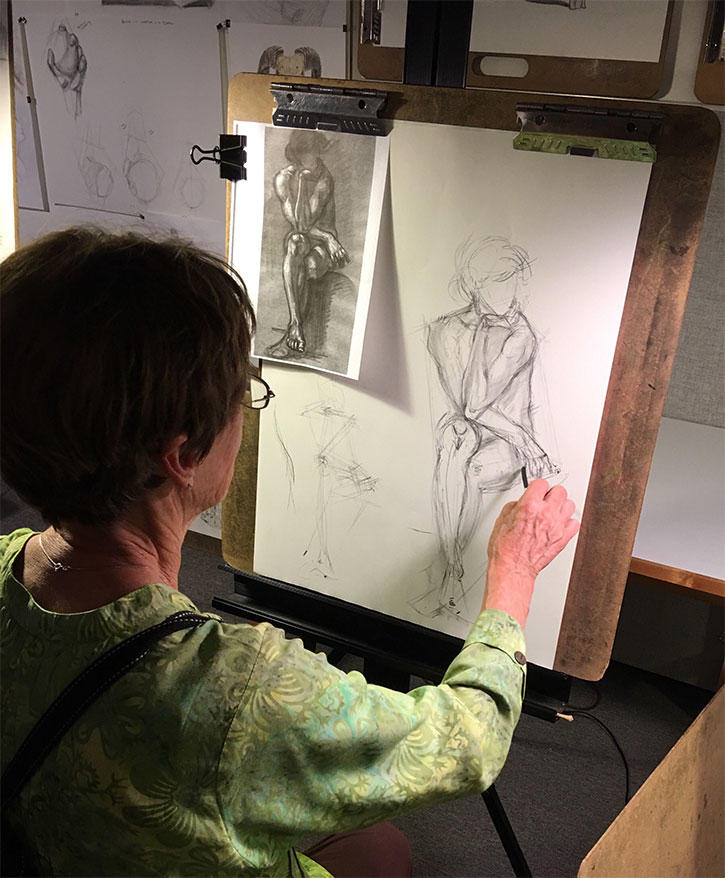
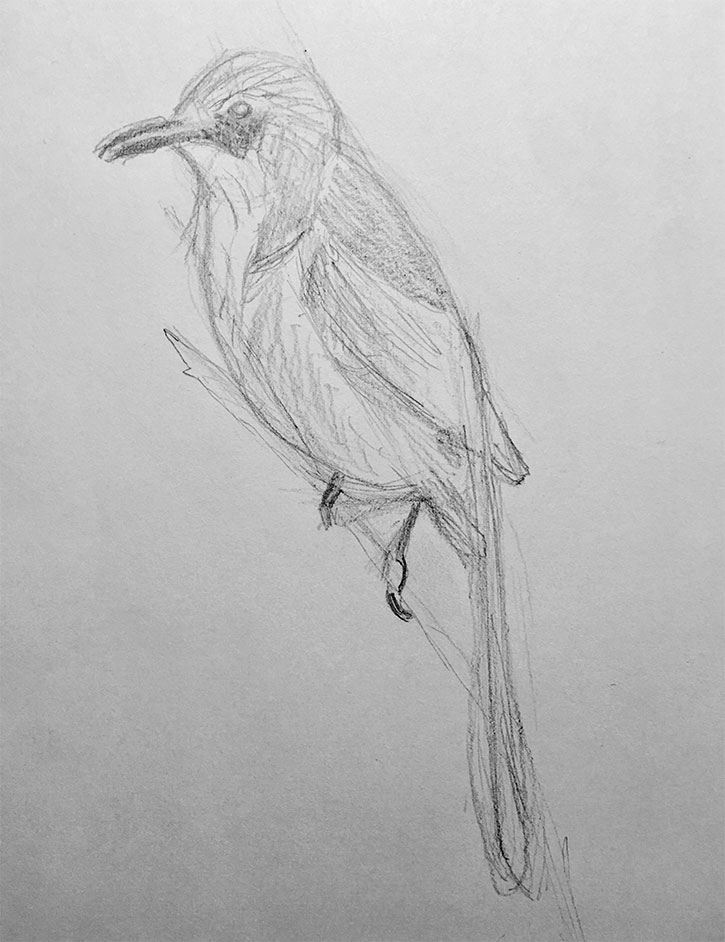
The deepest level of study happens unconsciously. As your conscious brain guides your drawing hand, your unconscious brain calculates measurements for angles, spaces, and proportions. As you learn to trust your brain’s power to guide you toward the final stages of your composition, your drawing hand will begin to flow effortlessly.
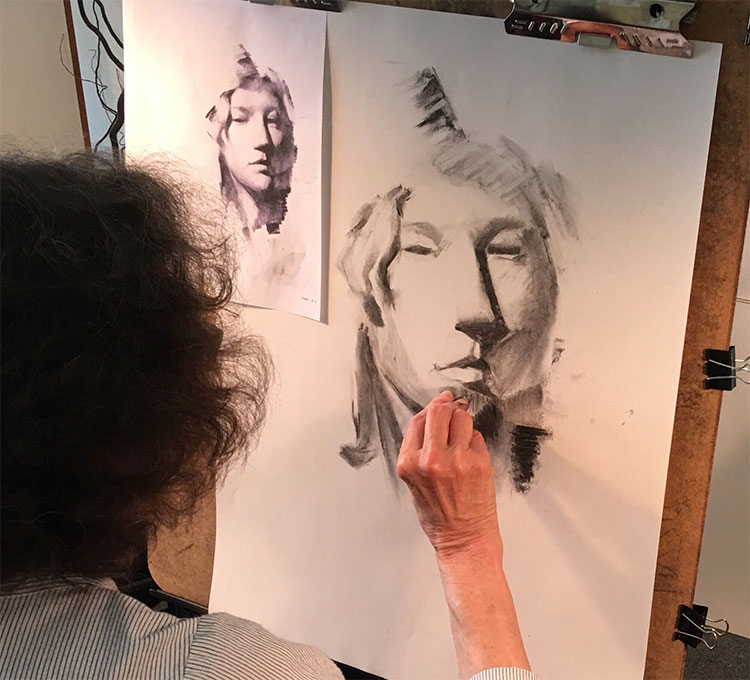
Study sketches help to keep your creativity fresh while exploring different drawing materials and techniques. You will become more productive and develop your own drawing strategies while finding joy in the art of studying.
Here are more highlights of our students as they use the art of studying to improve their skills in drawing from observation:
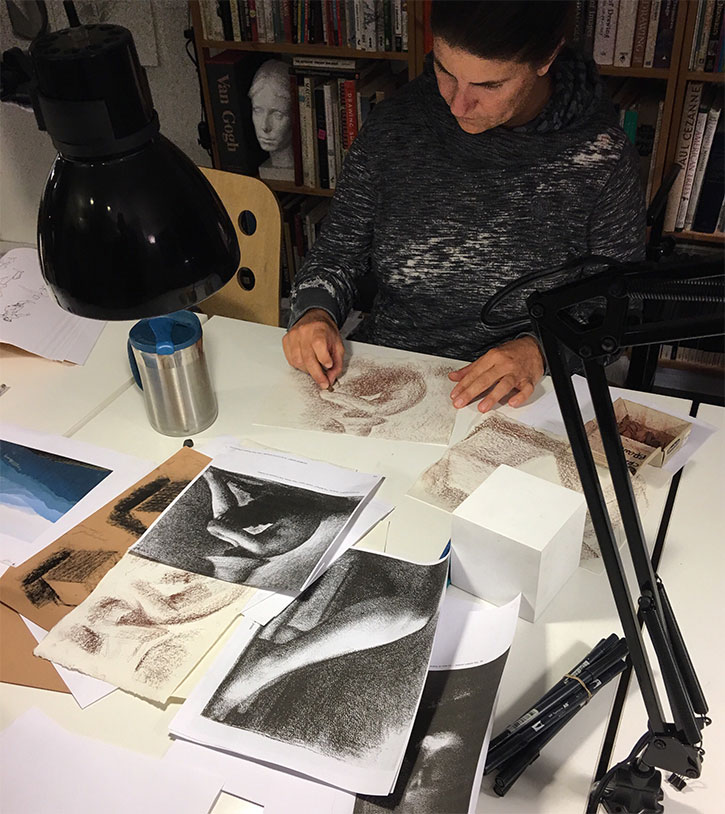
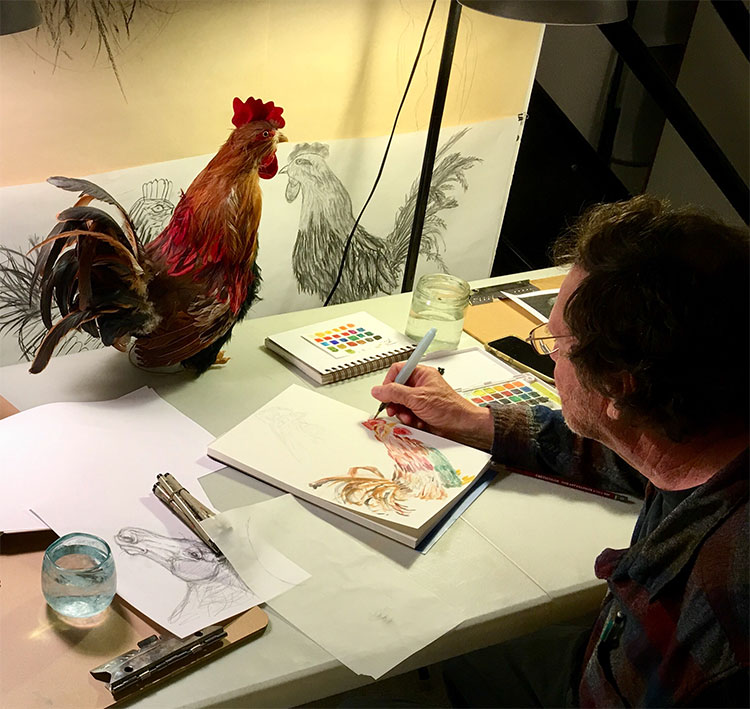
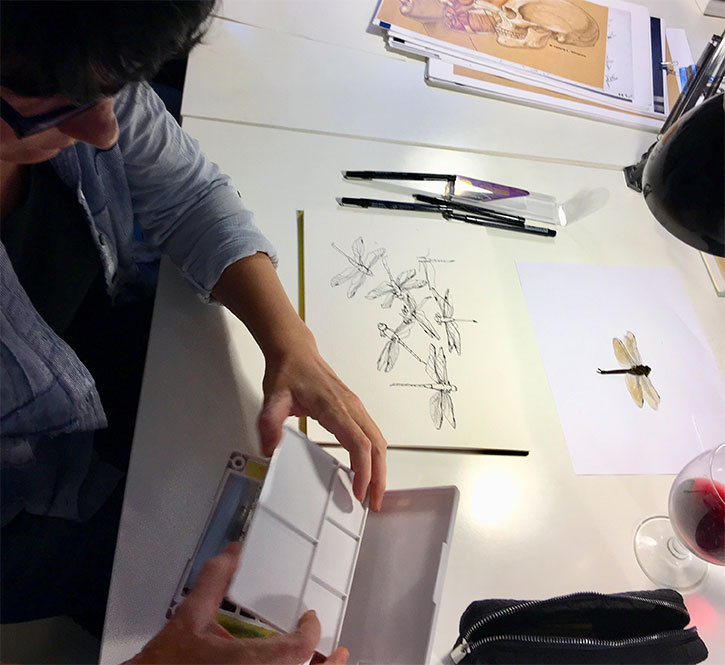
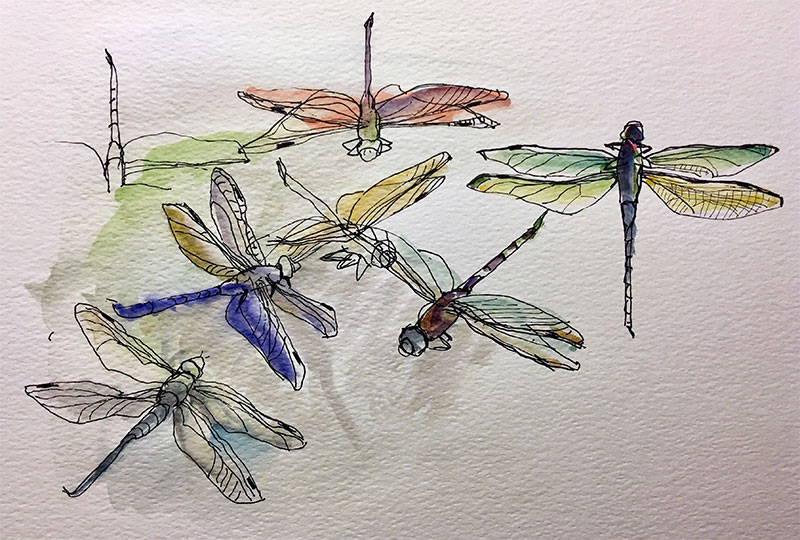
Want to join us?
Rob Court
Latest posts by Rob Court (see all)
- Drawing With Friends - April 11, 2022
- Frozen in Time: Cellphone Users as Models to Draw - April 8, 2022
- Getting Out & Getting Real - June 20, 2021
- Life Lines: Sketching the Unseen World of Movement - June 20, 2021
- The Ups & Downs of Urban Sketching - May 9, 2021
